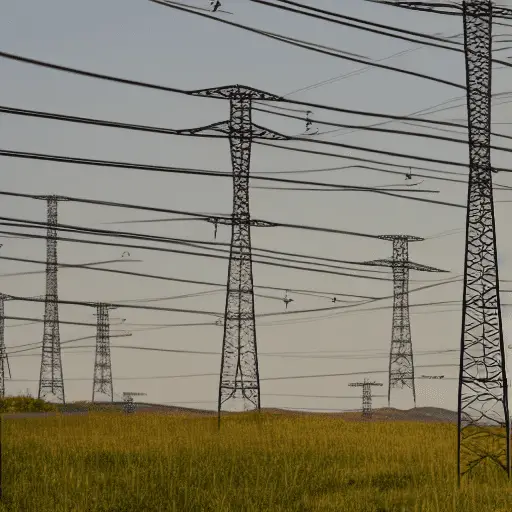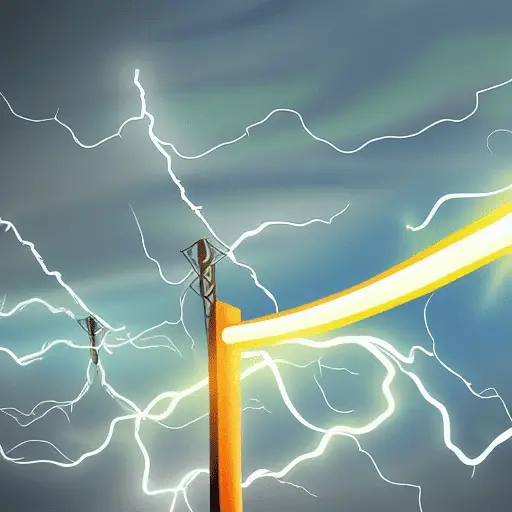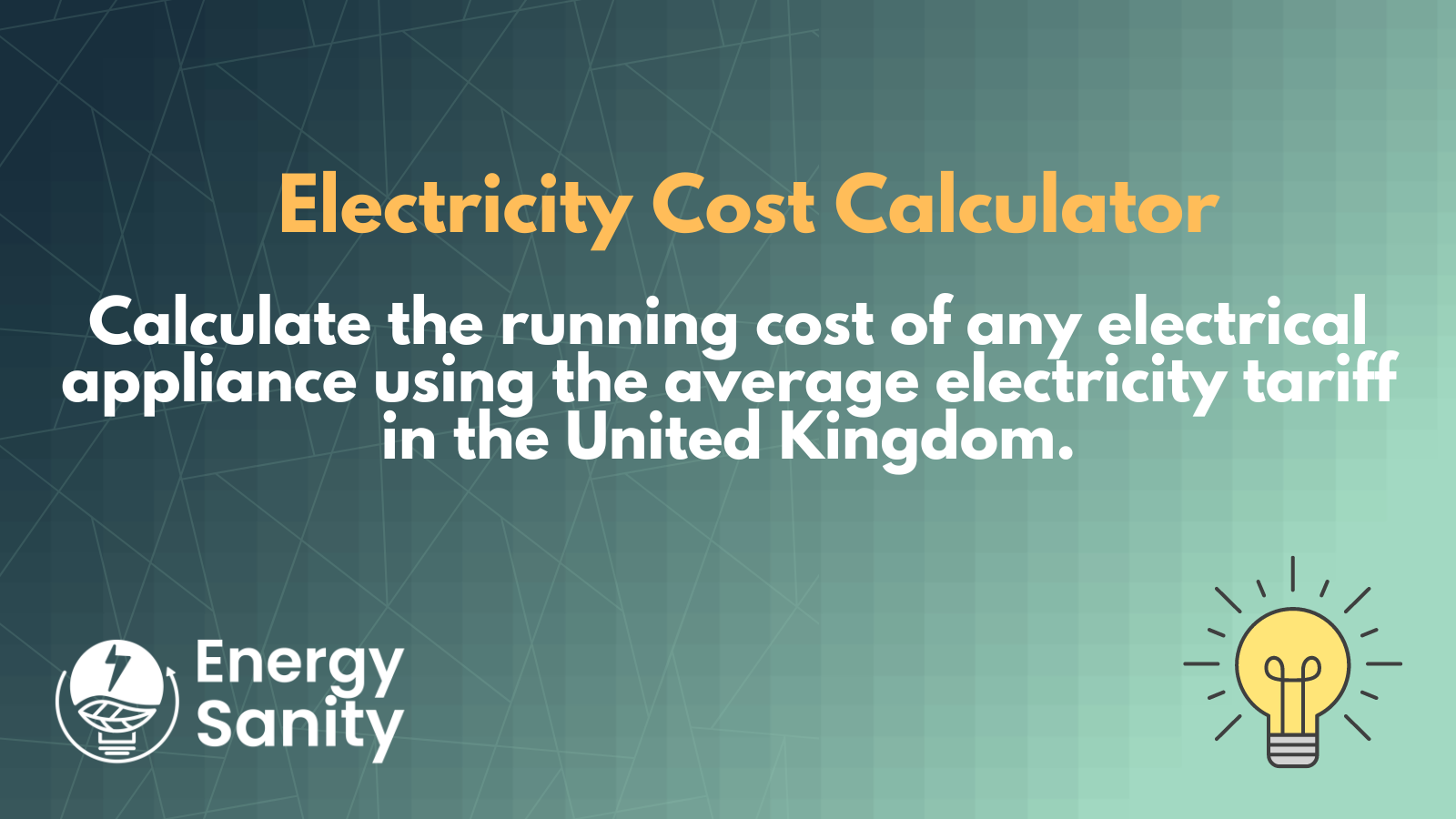We all know that electricity travels from power plants to our homes through a series of interconnected power lines, but have you ever stopped to think about how much energy is lost in the process?
According to recent studies, up to 6% of the energy produced at a power plant is lost before it even reaches your home.
In this blog post, we’ll explore some of the ways that energy is lost in power transmission lines, and what that means for both the environment and your wallet. Stay tuned!
What Are Power Transmission Lines?

There are three basic types of power transmission lines: single-circuit transmission lines, medium-voltage transmission lines, and three-phase transmission lines. Each type has different functions. Single-circuit transmission lines carry one circuit, while three-phase systems carry two circuits. Single-phase lines have four conductors per tower, and three-phase systems require six conductors per tower.
Thank you for reading this post 🙌 - don't forget to take advantage of our New Free Tools: Electricity Cost Calculator and Energy Bill Calculator 👇
Energy Bill Calculator
Our Energy Bill Calculator is designed to help you estimate your electricity costs in the…
Electricity Cost Calculator
Do you want to know how much your electrical appliances are costing you every month?…
Overhead power lines may be constructed of a variety of materials. Some are made of wood or steel poles, while others are made of aluminum or composite materials. For low-voltage connections, conductors are typically made of copper. The design of power transmission lines must ensure adequate clearance between energized and neutral conductors, and they must be resilient enough to resist ice and storms.
Electricity is delivered through an integrated system of power lines and generating plants. The transmission network allows large amounts of electricity to be moved long distances. During the transmission process, electricity generated by utilities and other energy producers is transformed into higher voltages by substations. Electricity is then delivered to homes by electric distribution companies.
What Causes Power Loss in Transmission Lines?
One of the most common problems that power transmission lines face is power loss, which is a result of various factors. One of the most important factors is the conductance of the wires. This loss is directly proportional to the square of the RMS current traveling through the line. Other factors that contribute to power loss are dielectric losses and the resistance of the line to the ground. The leakage current at the insulators between overhead lines and the cables is also due to conductance. Inductance and capacitance are not important factors for power loss.
Poor workmanship also contributes to power loss. Poor joinery and improper sizing of conductors lead to significant losses. This is why utility companies must increase the power cable sizes and reduce the length of distribution lines. The best way to reduce transmission losses is to reduce the cable lengths. Excessive lengths of cables can cause a great deal of energy loss. Likewise, the utility companies should use capacitor banks to help prevent power loss. In addition, technicians must follow strict quality standards when performing splices and joints.
How Much Power Loss in Transmission Lines?

When calculating losses, a transmission line’s resistance (also called the skin depth) is an important factor. It determines how much energy passes through the line, which reduces the power losses. Transmission lines also have a high voltage, which helps to reduce losses. The Australian Electricity Market Operator (AEMO) calculates transmission losses every year using different models.
Transmission losses are a significant problem, especially as more sources of generation are connected to the electricity grid. Often, power stations are located in regional or remote areas, so energy must travel long distances through an enormous network of power lines and utility poles before it reaches its final destination.
Another major source of power loss in power transmission lines is corona loss, which occurs when air molecules near a conductor are ionized. This process does not cause sparks, but it carries current along the wire. When this happens in transmission lines, the wire generates hissing noises, which can be audible. During a corona discharge, the wire may glow, which can be a sign of a fault or a problem. The color of the glow depends on the AC signal, so if the line is positive, it will glow brightly, while if it is negative, the lines will be red.
Why Do Transmission Loss Factors Matter?
Transmission loss factors are an important factor when determining the cost of power. These losses occur during the transport of electricity from the generator to the distribution system. The Australian Energy Market Operator (AEMO) calculates these factors to reflect these losses. They help investors understand the true cost of power transportation, which can help them make informed decisions about where to install new generation assets.
These factors are calculated by AEMO and reflect the amount of electricity lost as heat during the transmission of power. The more electricity generated, the higher the transmission loss. More generators mean more congestion in the grid, which causes more electron collisions, heat, and transmission losses. Transmission loss factors are calculated by taking into account the location of generators in a region.
Transmission loss factors can be calculated using several methods. One is statistical energy analysis (SEA), which involves estimating the energy transfer between subsystems. Another method is statistical modal energy distribution analysis (SMEDA), which relies on a dual-modal formulation.
How to Reduce Power Loss in Transmission Lines

There are many ways to reduce power loss in power transmission lines. These can range from keeping the wires at a high temperature to covering them with a rubber layer. Heat loss is a major issue when electrons converging on a transmission line, so it is important to find a way to minimize this loss.
Energy losses in power transmission lines are caused by the Joule effect. The energy is lost in the form of heat in the conductors. The transmission lines have a relatively small resistance per kilometer, but the loss is large. The heat produced by the conductor leads to an increase in resistance, which further increases energy loss.
Another method to reduce power loss in power transmission lines is to replace the old distribution lines with new ones. Overhead insulated conductors can be replaced with new ones that have a similar cross-section. In addition, the distribution transformers should be replaced with newer ones if their power factor is less than 0.85.
Overhead Transmission
When electricity is sent over a transmission line, some of it is lost in the form of heat. This happens because electrons in the wires will collide with each other and with atoms or material in the line. This causes an electrical resistance, which in turn generates heat. Luckily, there are several ways to reduce the amount of energy lost in transmission lines.
One method that can greatly reduce the amount of energy lost in transmission lines is to bundle wires. This way, the wires are all connected to one another while keeping the voltage constant. This method reduces the amount of metal used while still achieving the required radius. Another way to reduce the amount of energy lost in overhead power transmission lines is to combine smaller lines.
The loss in transmission cables is equal to about 10% of the energy that travels along them. This loss in power can be seen in the form of sagging power lines. Some of this sagging is due to gravity, but some is due to heat generated by the electricity that has been lost. In Australia, approximately 10 per cent of the electricity produced by power plants never reaches the consumers.
Underground Transmission
There are many reasons why people choose to have their power transmission lines underground. While undergrounding may have aesthetic benefits, it also carries a risk of flooding. Also, buried power lines are more susceptible to equipment failure and lightning. Also, the lifetime of underground utilities is much shorter than that of overhead lines. Uprooted trees can also disrupt underground service. Moreover, underground power lines are harder to maintain. This is why it is important to evaluate the value of your money before making the switch to underground power lines.
Transmission lines lose energy due to the Joule effect, which occurs in power lines and transformers. While transmission lines are relatively small in terms of resistance per kilometer, their extensive network has a large impact on resistance. The heat produced by the conductors in transmission lines increases the resistance, and this leads to energy loss.
While burying power lines is a viable option, it is still not widely used. It is expensive and requires multiple stakeholder approvals. In the U.S., it costs about $750 per foot – ten times more than current methods.


